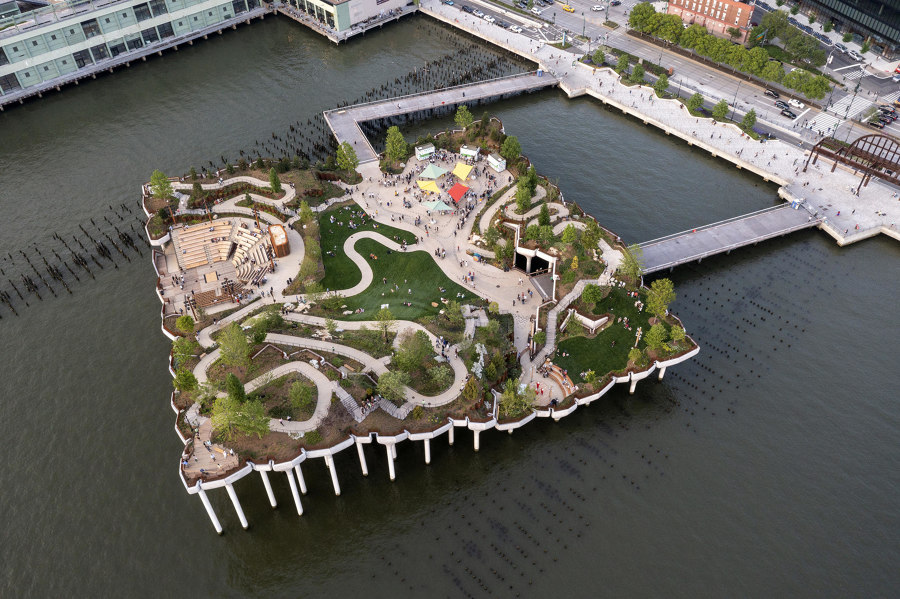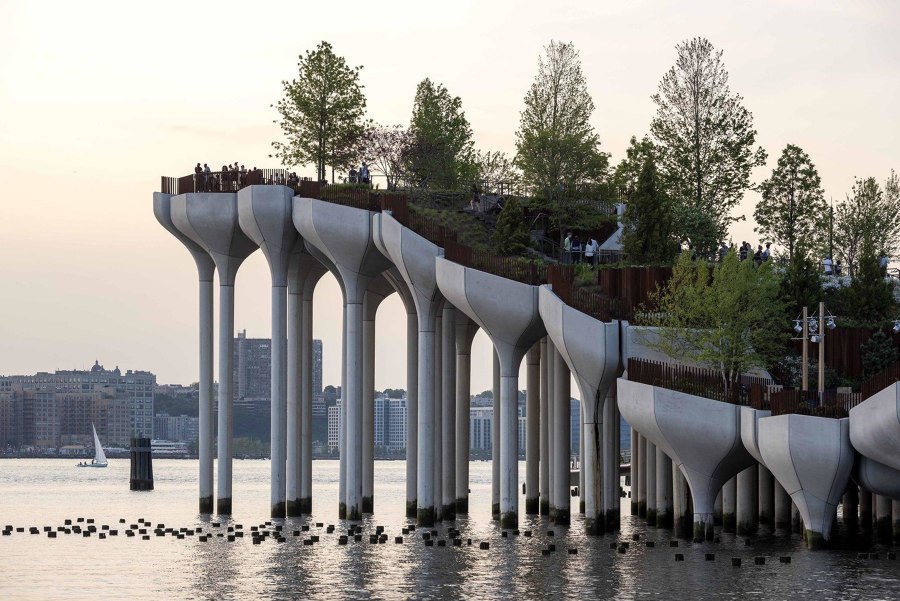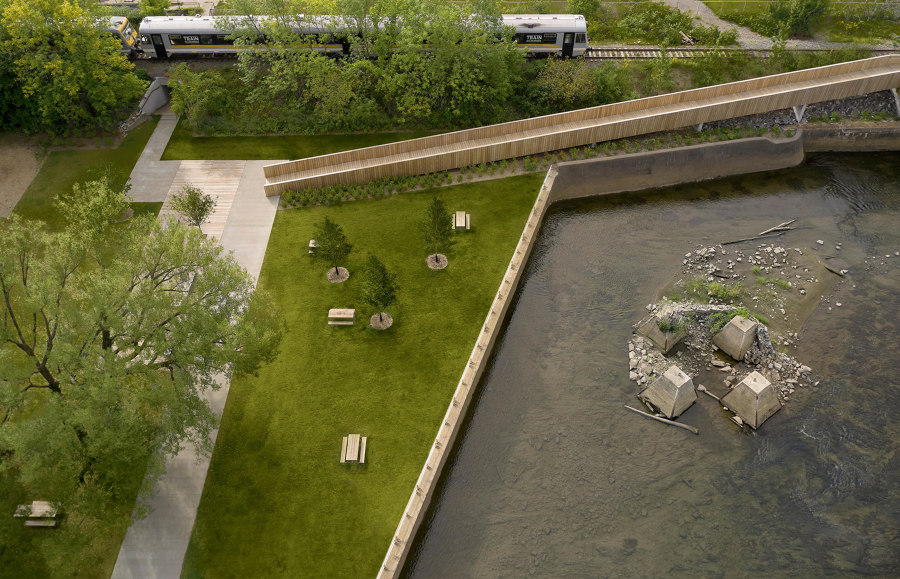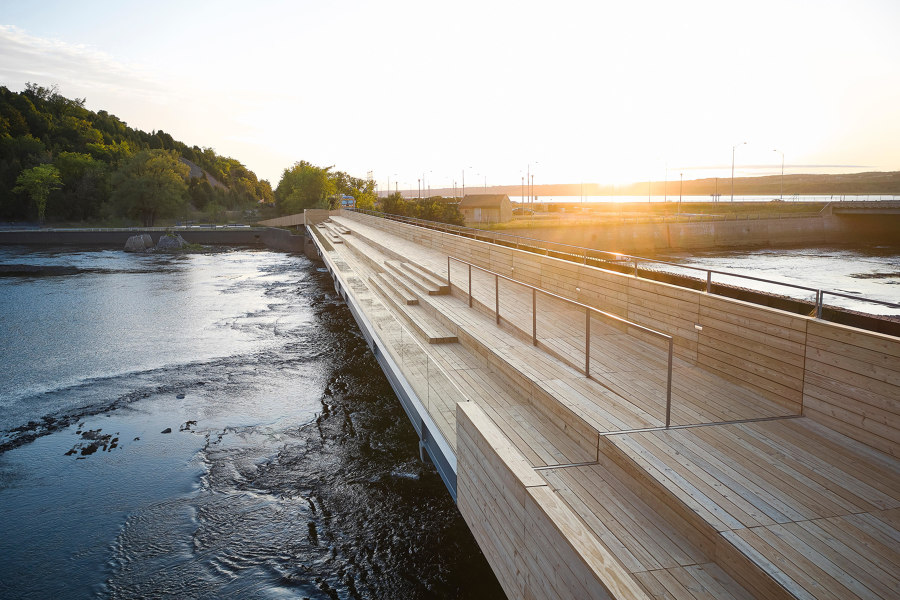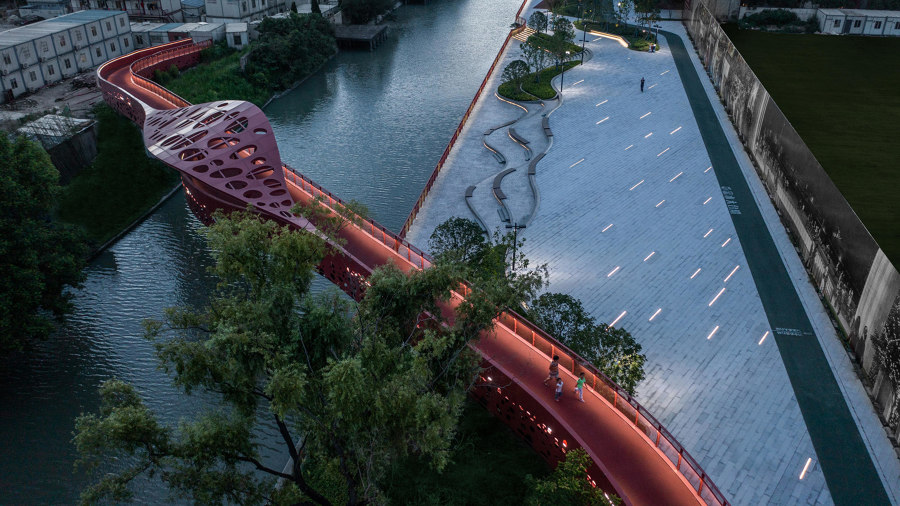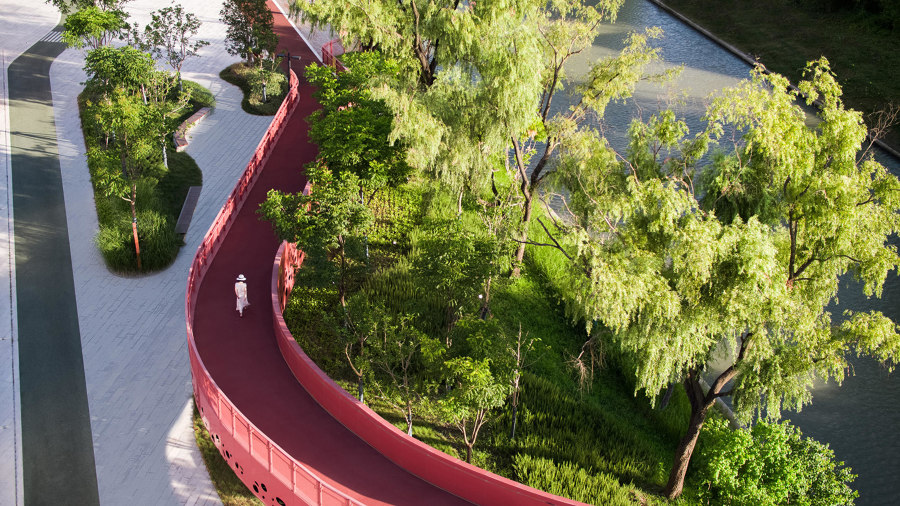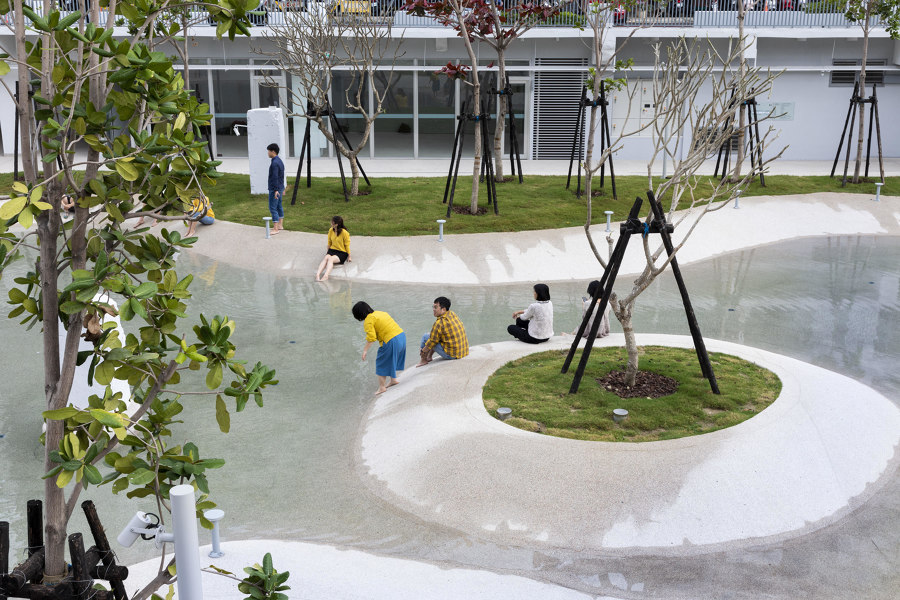Water in public-space architecture
Texte par Peter Smisek
01.09.23
Water, whether river, lake or pool, not only adds playful potential to public-space architecture, it also offers numerous other aesthetic, practical and environmental benefits.
Daoust Lestage Lizotte Stecker's Experience Chute Park in Quebec involves minimal intervention in the existing landscape, instead drawing attention to the water itself. Photos: Maxime Brouillet
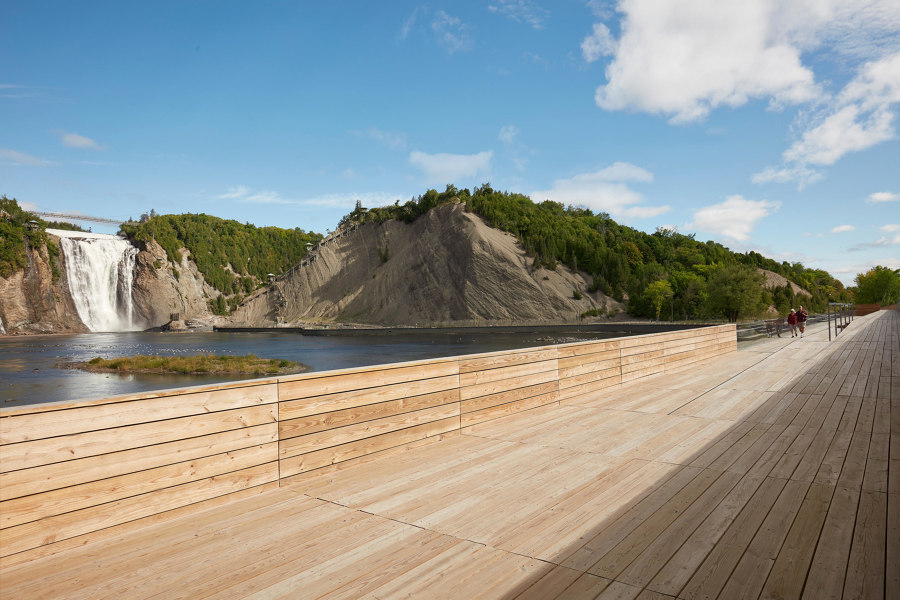
Daoust Lestage Lizotte Stecker's Experience Chute Park in Quebec involves minimal intervention in the existing landscape, instead drawing attention to the water itself. Photos: Maxime Brouillet
×Water is the focus, and also often the defining feature, of a whole host of contemporary public spaces designed today. As well as being a decorative element in itself, bodies of water can provide valuable habitat for wildlife, create a cooler microclimate and store excess rainfall during storms. It can also bring a playful element to more formal spaces, and soften the effects of hard landscaping.
Heatherwick Studio's Little Island Park in New York offers visitors views of the city across the water as well as a new habitat for local wildlife. Photos: Timothy Schenck
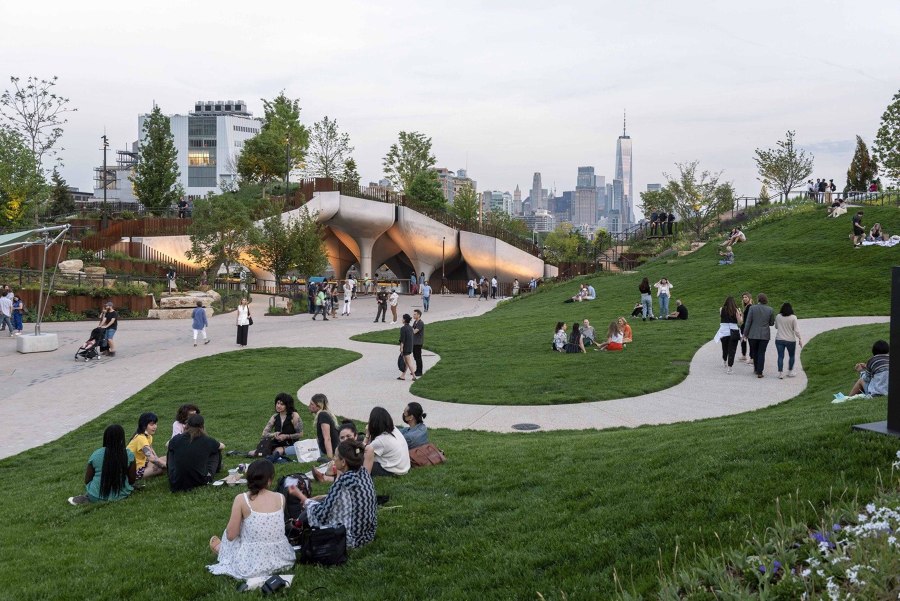
Heatherwick Studio's Little Island Park in New York offers visitors views of the city across the water as well as a new habitat for local wildlife. Photos: Timothy Schenck
×In New York, the Little Island Park by Heatherwick Studio rises gracefully out of the Hudson River, offering visitors views of the city over the water. Concrete piles transform into planters that form the park's rolling topography, accomodating an amphitheatre, a compact plaza and various lookout points. Indigenous trees and plants provide habitat for insects and birds, while the still visible wooden piles that once supported commercial piers on the site provide a breeding ground for fish.
Quebec City's Experience Chute Park by Daoust Lestage Lizotte Stecker allows visitors to experience Montmorency Falls up close as well as observe them from a distance. Photos: Maxime Brouillet
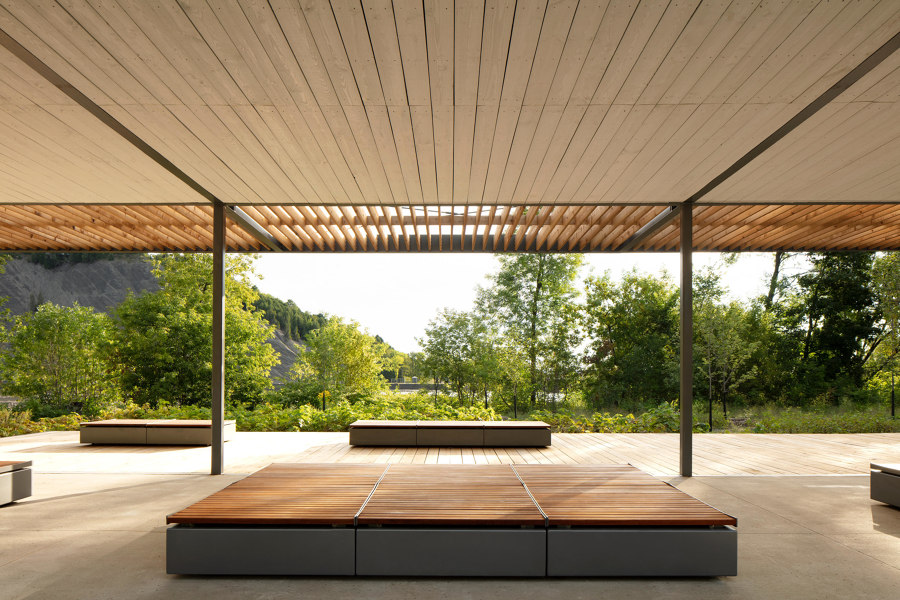
Quebec City's Experience Chute Park by Daoust Lestage Lizotte Stecker allows visitors to experience Montmorency Falls up close as well as observe them from a distance. Photos: Maxime Brouillet
×A different approach includes minimal intervention in the existing landscape, instead drawing attention towards the water itself. At the edge of Quebec City, Experience Chute Park has been redesigned by practice Daoust Lestage Lizotte Stecker to enhance the movement through the space and allow visitors to contemplate the 90m tall Montmorency Falls. Two timber bridges – one half-submerged and the other featuring raised seating – allow the public to observe the waterfall from near and far, while paths along the waterfront open up new viewing points. A simple welcome pavilion consisting of a raised pergola roof and some fixed seating in the middle of a nearby forested area is an elegant, minimal addition that doesn't distract from the spectacular natural setting.
SPARK Architects' Minhang Riverfront Regeneration creates a lively new park along the water, helping to revitalise the surrounding area. Photos: Shine Lab
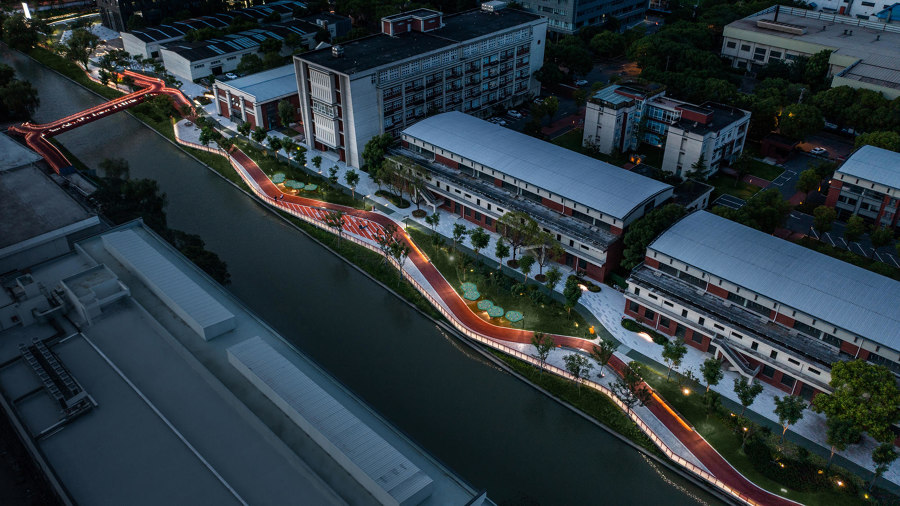
SPARK Architects' Minhang Riverfront Regeneration creates a lively new park along the water, helping to revitalise the surrounding area. Photos: Shine Lab
×In the case of the Minhang Riverfront Regeneration in Shanghai, the sinuous geometry of the new linear park is inspired by rippling water and the shape of diatom algae. SPARK Architects have designed the new linear park, which features a central waterside plaza, a winding red footpath with three new bridges across the water, a green-coloured jogging track and lush planting. The new park offers plentiful seating, new kiosks and spaces for various activities, such as cinema screenings and helped regenerate the surrounding industrial area that now features a lively mix of offices, commercial, educational and institutional uses.
Tainan Springs is a new public space designed by MVRDV that features a paddling pool that can store excess stormwater during the wet season. Photos: Daria Scagliola

Tainan Springs is a new public space designed by MVRDV that features a paddling pool that can store excess stormwater during the wet season. Photos: Daria Scagliola
×In Tainan, MVRDV has designed a new public plaza on the site of an old shopping mall. Rather than demolishing the building and erasing all traces of its existence to start over, MVRDV dismantled most of the structure and excavated all the way to the basement. Here, the architects created an artificial, gentle topography with an expansive paddling pool and areas with trees and planting. The juxtaposition of the ruined remains and the new artificial landscape creates a unique experience in the middle of the city, while the mist spray installation helps keep it cool during the tropical summers.
© Architonic
Head to the Architonic Magazine for more insights on the latest products, trends and practices in architecture and design, or find inspiration in a whole world of projects from around the globe through ArchDaily's architecture catalogue.

